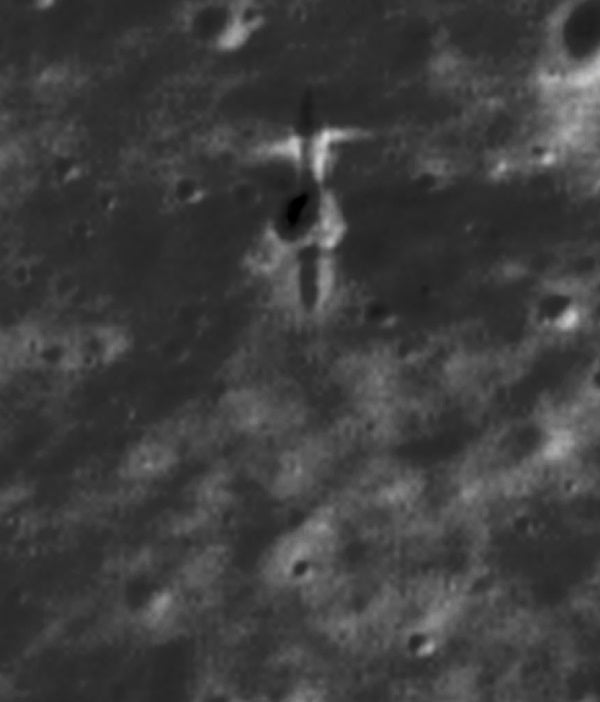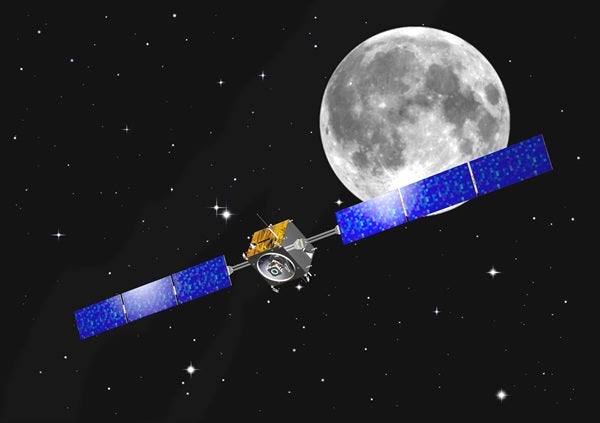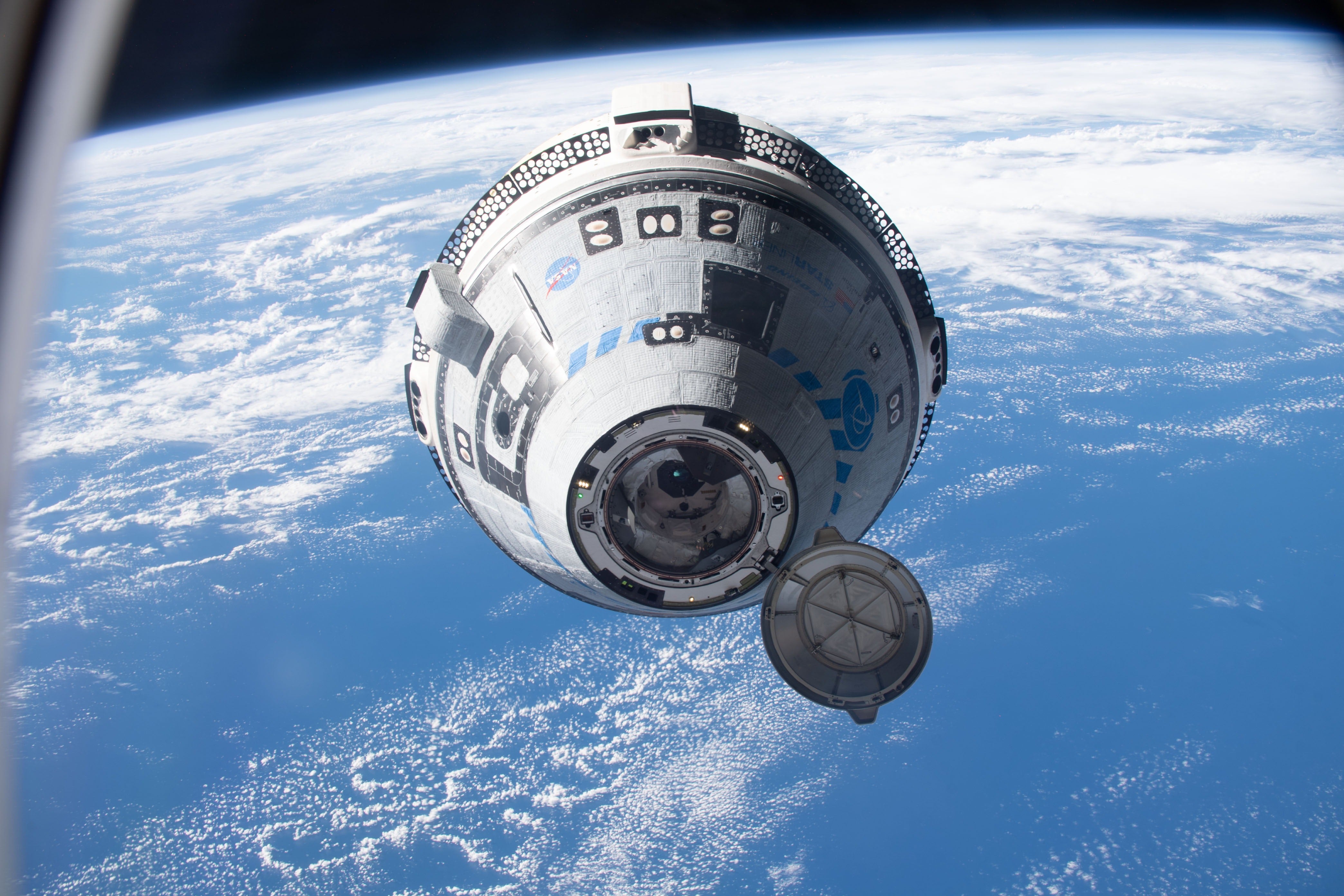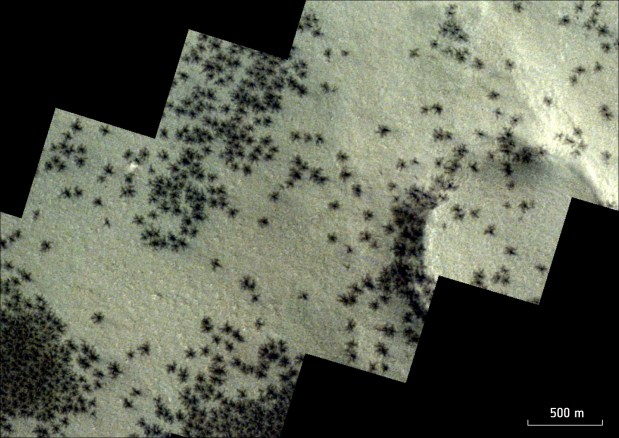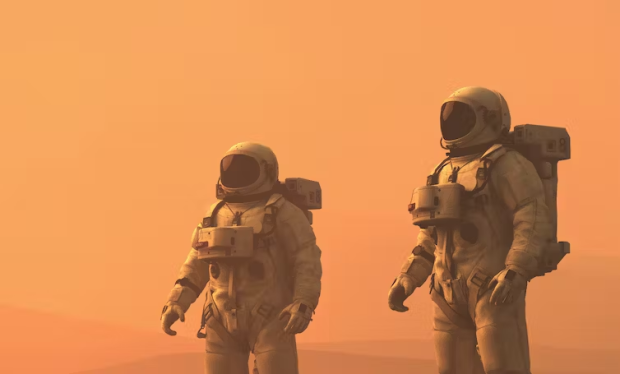If you’re curious, that resting place is 34.262° south and 46.193° west, as presented today at the European Planetary Science Congress 2017 in Riga, Latvia. The site was discovered in data taken by the Lunar Reconnaissance Orbiter by Phil Stooke of Western University, Ontario. Stooke spotted a gash on the lunar surface roughly 66 feet (20 meters) long and 13 feet (4 m) wide, indicating that SMART-1’s landing included grazes and bounces along the surface at about 1.2 miles per second (2 km/s).
This 20-frame sequence shows SMART-1’s impact on the lunar surface in 2006, which takes place in just one frame.
Canada-France-Hawaii Telescope / 2006
Stooke said of his discovery, “Orbit tracking and the impact flash gave a good estimate of the impact location, and very close to that point was a very unusual small feature.” That feature shows white ejecta, or material sprayed out along the surface of the Moon due to the impact, stretching 23 feet (7 m) from the first point of impact. Along the gouge, other eject streams occur, indicating three further bounces along the path.
One of the best ways to study an object’s surface and, sometimes its interior, is to observe what happens when it is struck. Most material brought back by astronauts is from the very uppermost surface of the Moon, but impacts such as this can dig deeper, revealing what’s going on beneath the surface via the ejecta they throw up. Tracing the spacecraft’s path will help lunar scientists better characterize the composition of the Moon by comparing the actual results with simulations.

